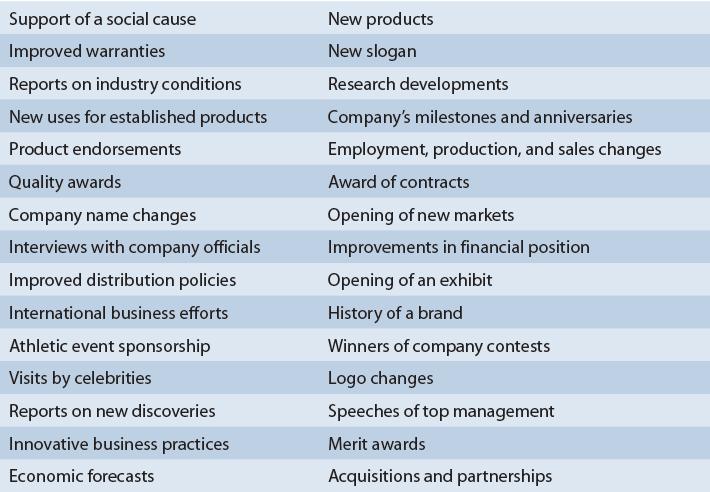Question:
Determining the message that advertising is to communicate to the customer is an important part of developing a marketing strategy. A sound understanding of the various types of advertising and different forms of media is essential in selecting the appropriate methods for communicating the message.
These decisions form a critical segment of the marketing plan. To assist you in relating the information in this chapter to the development of your marketing plan, consider the following issues:
1. What class and type of advertising would be most appropriate for your product?
2. Discuss the different methods for determining the advertising appropriation.
3. Using Table 16.1 as a guide, evaluate the different types of media and determine which would be most effective in meeting your promotional objectives (from Chapter 15).
4. What methods would you use to evaluate the effectiveness of your advertising campaign?
5. Review Table 16.3 and discuss possible uses for publicity in your promotional plan.
Table 16.1
Table 16.3
Transcribed Image Text:
Medium Newspapers Magazines Direct mail Radio Television Digital media Outdoor Advantages Reach large audience; purchased to be read; geographic flexibility; short lead time; frequent publication; favorable for cooperative advertising; merchandising services Demographic selectivity; good reproduction; long life; prestige; geographic selectivity when regional issues are available; read in leisurely manner Little wasted circulation; highly selective; circulation controlled by advertiser; few distractions; personal; stimulates actions; use of novelty; relatively easy to measure performance; hidden from competitors Reaches 95 percent of consumers; highly mobile and flexible; very low relative costs; ad can be changed quickly; high level of geographic and demographic selectivity; encourages use of imagination Reaches large audiences; high frequency available; dual impact of audio and video; highly visible; high prestige; geographic and demographic selectivity; difficult to ignore; on-demand capabilities Immediate response; potential to reach a precisely targeted audience; ability to track customers and build databases; highly interactive medium; real- time analytics Allows for frequent repetition; low cost; message can be placed close to point of sale; geographic selectivity; operable 24 hours a day; high creativity and effectiveness Disadvantages Not selective for socioeconomic groups or target market; short life; limited reproduction capabilities; large advertising volume limits exposure to any one advertisement High costs; 30-to 90-day average lead time; high level of competition; limited reach; communicates less frequently Very expensive; lacks editorial content to attract readers; often thrown away unread as junk mail; criticized as invasion of privacy; consumers must choose to read the ad Lacks visual imagery; short life of message; listeners' attention limited because of other activities; market fragmentation; difficult buying procedures; limited media and audience research Very expensive; highly perishable message; size of audience not guaranteed; amount of prime time limited; lack of selectivity in target market Costs of precise targeting are high; inappropriate ad placement; effects difficult to measure; concerns about security and privacy Message must be short and simple; no demographic selectivity; seldom attracts readers' full attention; criticized as traffic hazard and blight on countryside; much wasted coverage; limited capabilities








